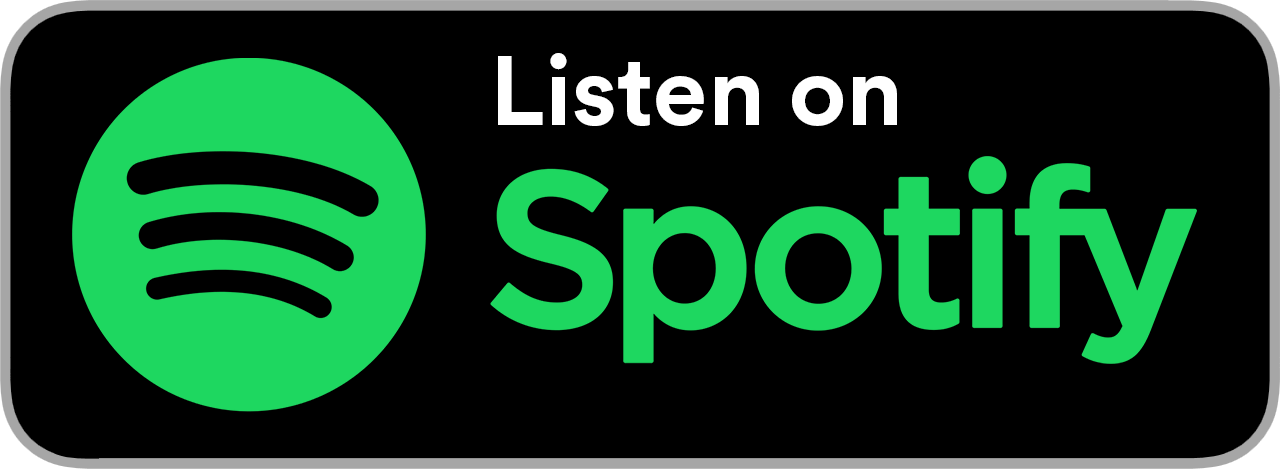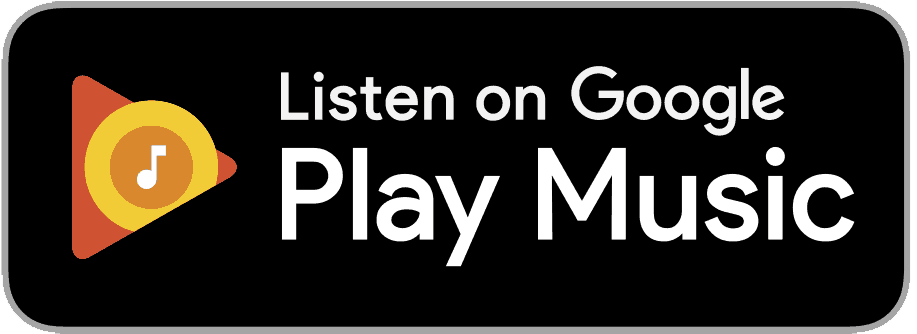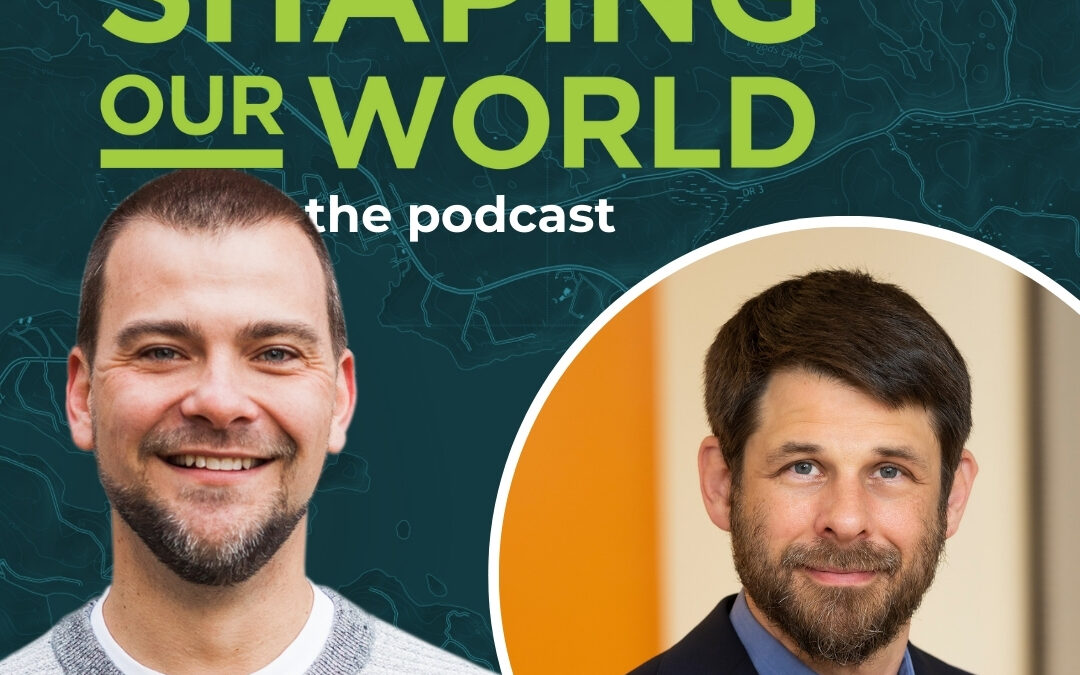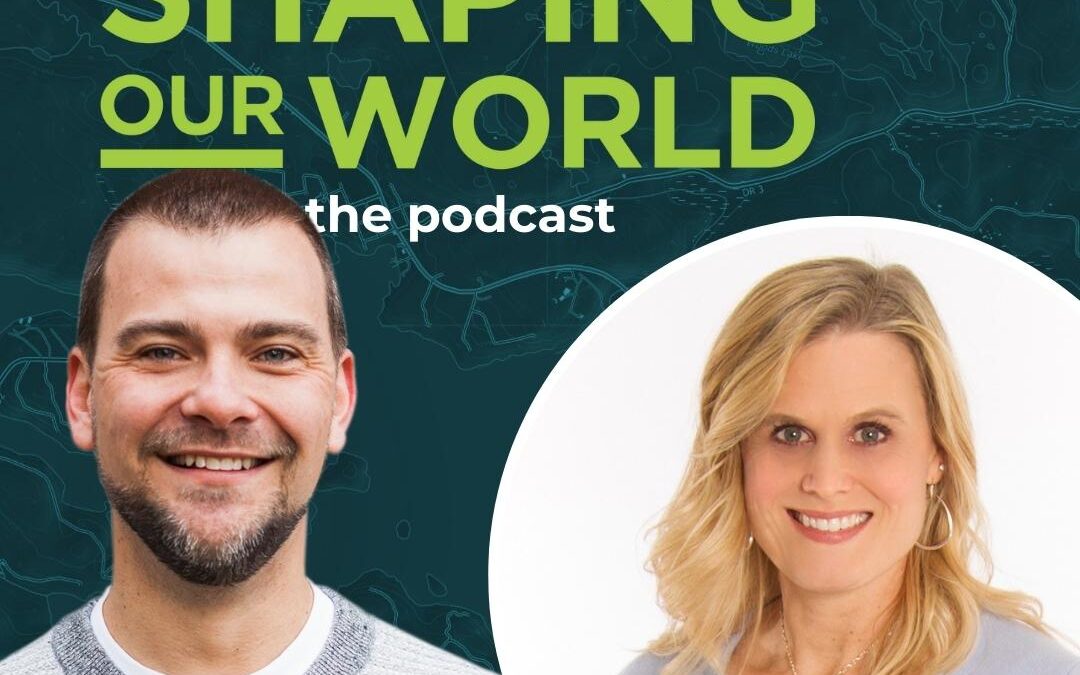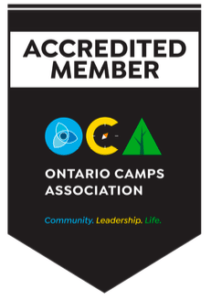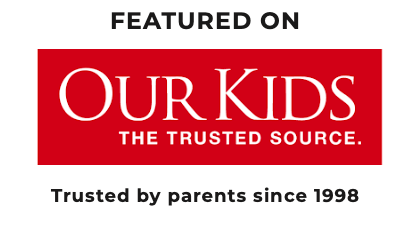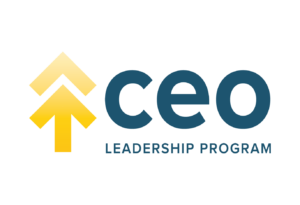[00:00:12.440] – Speaker 2
Well, hey, everyone. For those of you who don’t really know and you’re just dropping in for the first time, I want to introduce myself. I’m Chris Tompkins and welcome to the Shaping Our World podcast. The goal of the Shaping Our World podcast is to invite you into a conversation that will leave you more confident in understanding and inspiring the young people in your life. Each episode, we talk with leading experts and offer relevant resources to dive deeper into the world of our youth today. For those of you who’ve been listening for a while now, thanks for journey with us and welcome back. I don’t know if you’re like me, but if you can remember back to actually getting magazines in the mail sent to you. Some of us may still be doing that, but with where digital media is today, I know most of my magazines are things that I read or online. As you’ll hear today, when I was a younger person, middle school and others, I subscribed to Sports Illustrated, and I could not wait to get the magazine in the mail. I would look forward to it and I would scout it through it and read every part of it.
[00:01:17.270] – Speaker 2
It’s something I really look forward to. Well, if you’re Canadian and over the last number of years, if you’ve lived and resided in Canada, you may be familiar with our guests today or at least the content that our guest today represents. It’s a magazine that has been around for decades. Today, we have Jackie Farquhar with us. Jackie is the Editor in Chief of the award winning magazines Chirp, Chickadee, and Owl. She has also edited four non-conviction books for children and can be often seen hosting craft, recipe, and science segments on TV and at live events. She loves connecting with young readers and doing hands on activities even when she ends up covered in paint and glue. In our conversation today, you’re going to hear us go back and forth about those magazines that for so many of us bring fond memories when you open them up and their crafts and activities. But you’ll see how the magazines have been adopting new ways to connect with kids and really listening and journey with young people and still are an incredible resource for kids today as the conversation about growing up in today’s world is facilitated through these magazines.
[00:02:33.460] – Speaker 2
And believe it or not, there are still magazines that are getting delivered to kids all across our country here in Canada. And I think you’re going to find the conversation insightful today about young people and where they’re at and how at least one company is navigating that. There’s going to be some inspiring things for you to take as parents from our conversation. So I’m looking forward to you joining us today with our conversation with Jackie Farquhar. Welcome, Jackie.
[00:03:02.090] – Speaker 1
Thank you. Hi.
[00:03:03.260] – Speaker 2
It’s great to have you with us. So we always, beyond the intro, want to get to know our guests a little bit more. And so we’ve got a few questions around the title of our podcast. And so let’s start right off with, what shaped your world when you were growing up, when you were a child or a teenager? What were the biggest influences in your life?
[00:03:22.970] – Speaker 1
That’s such a good question and not one that you tend to think about a lot. But music really did, 80s media and in general, I think, really shaped me for good or bad. I didn’t know it at the time, but nature really shaped me. I grew up in Northern Ontario, and nature was just such a big part of my life that I didn’t appreciate until much later how much it actually shaped my world.
[00:03:45.940] – Speaker 2
I saw something on Instagram or Twitter the other day, just about 80s movies. How many had you seen? I went through all of them. I’m like, Oh, I’ve seen almost all these. That was a golden era for media. So a lot of great ones that were listed on that that I hadn’t thought about in a long time.
[00:04:08.420] – Speaker 1
Oh, yeah. I need a list.
[00:04:10.070] – Speaker 2
I would love to see it. Goonies was one of them. I was like, Oh, my goodness. I love that movie. That was so great when I was a kid. But anyways, now we’re dating ourselves, Jackie, and we’re here to talk about young people, so we’ll keep going. Tell us about what’s shaping your world today. Help us get to know you a little bit more.
[00:04:29.790] – Speaker 1
Well, what’s shaping my world today is my 10 year old son, I think. A lot of what I do, I’m immersed in his world right now of dragons and fun video games and books that he read and the fantasy world that he’s in. So that’s such a big part of my life right now. But then also trying to find fun things to do for myself. But right now, lately, what I’m super into is just walking around and trying to find free things in my neighborhood for free books, free stuff that people are getting rid of that I can craft into something else or do something with. It’s an obsession.
[00:05:08.680] – Speaker 2
All right. Well, we won’t say where you live to warn your neighbors that you’re coming around. No, that’s great. I love that about using some creativity and reclaiming some things. And yeah, that sounds like a great hobby. So talk to us about how, like your work, what are you doing to shape the world of… We heard a bit in your bio about what you do, but maybe elaborate a little bit on that. What are you doing in your work, your day to day, nine to five, that shapes the world of young people, children and children probably a bit more particularly based on what you do. Tell us about what you’re doing ight now.
[00:05:46.430] – Speaker 1
Well, day to day, I am producing and with a team producing Chirp, Chickpea and Owl magazines, which are for readers from three years old to 13 years old. T hey’re print magazine teens primarily. And so we are day to day researching content for those issues, doing photo shoots, talking to kids, talking to parents, making crafts, making recipes. Just off screen, my table is literally covered in craft supplies right now because I’m making a bunch of crap. So that’s the day to day. And the best part about talking about being so immersed in my son’s life is that he is great. Him and his friends are great market research, particularly for particular ly for owl because owl aged range is 9 to 13, and he’s right in there. I totally move stroke on his conversations and hear what he’s talking about with his friends and then think about, how can we put that into the magazine so that they’re relevant?
[00:06:45.180] – Speaker 2
Well, that’s great. You’ve been an editor there at OwlKids in some capacity, first contributing to Al and Chickadee and now as editor in chief at Chirp, Chickadee and Owl! Magazines for nearly 20 years. H as the type of content you create evolved to adjust to our changing young people? I’m thinking about how kids now have much more access to things. We’re in an open world, socially conscious, they’re culturally sensitive. In what ways have you noticed kids changing over your time there? I know that’s a big question, but maybe you can hit up some things that you’ve seen in the generational differences.
[00:07:26.860] – Speaker 1
Yeah. As you said, kids now are little more socially conscious and culturally sensitive. They just have so much access to information about things that affect them in the world. We’ve seen that definitely amp up. All started in 1975, so things did feel a bit different then. We have had to adapt to those changes, and we need to listen to what kids are telling us that they’re talking about and what they want to learn about, what they might have anxieties about, what they have questions about, and then we adapt accordingly. The best thing, though, is that our mandate hasn’t actually changed since 1975. It’s still the same overarching themes in the magazines since then. But now we do talk about difficult things really overtly now, things such as racism, social issues like bullying. We highlight indigenous issues a lot and talk about land conservation and things like that. We’ve always talked about those things, but I think now we talk about it more. Maybe just because now we have more products. We have a daily news website for owl magazine kids, so they get access to daily news. We talk about big stuff on there all the time in a way that’s accessible for them.
[00:08:49.280] – Speaker 1
Then we’ve also had to add other things because I think now you just have to have more than just a print magazine. We have a YouTube channel. We have an eMAG that comes out twice a month for our owl subscribers. And then we also have our news website that’s updated daily and blogs and things like that to give the community. But overall, we actually haven’t changed that much in terms of environmental stewardship, cultural awareness. Those general mandates are the same.
[00:09:22.180] – Speaker 2
I’m intrigued. You mentioned some of these high arking themes that you’ve always had in place. And I think you mentioned some of them. Can you share with us what are some other things that you think when you look at the magazine and what you’re doing for kids, what are the four to 5 things that are really important? Because I’m imagining that a big reason on why you do this is to help young people grow and develop and come alongside them. What are some of those hierarchic themes that really haven’t changed? They’re just maybe expressed in different ways.
[00:09:55.780] – Speaker 1
Yeah, I think our hierarchy theme is to foster a love of reading and literacy. And it doesn’t just mean print literacy, it’s literacy in every form. So we’re trying to show kids that they have a voice, that they have access to information, that they have a hand in changing the world. T hrough that, it can be learning about, highlighting Indigenous issues. It can be talking about history of racism in Canada. It can be talking about social issues like bullying on social media and how that’s impacting kids. It just runs all across all things that kids are worried about and talking about that they always have worried about and talked about. But I think now, I think A lice has always been into land conservation, getting to know more about the world, seeing your place in the world, new technology, and that’s always been the theme. But now I think we can just talk about it in a bit more of an honest, open way with kids because kids are getting that information so much anyway. They know so much. They know more than us, so we also have to.
[00:11:12.550] – Speaker 2
Learn from them. Yeah.
[00:11:13.770] – Speaker 1
Oh, yeah. Yeah. In a way, that’s a good way to put it that now I feel like maybe it’s more like a conversation that our print magazines are no longer just telling kids something. It is a real conversation with kids. The community that we’ve built with our readers is what drives the content. It really is for them, by them.
[00:11:36.740] – Speaker 2
For them. That’s great. That segues right into the next thing I was going to ask about generating the content. You talked about listening. You talked about listening to your son and being close. How do you do that? How do you, as the editor in chief of these magazines, really keep your finger on the pulse of what kids are into? What does that listening even look like?
[00:11:58.540] – Speaker 1
It’s spying. It’s spying on my child. You know what? I think because our whole team is so immersed in child development and the magazines that we’re always out there in the world just watching and listening. Kids are so honest and forthcoming, especially at those earlier ages. Everywhere I’m going, I’m working and thinking about, Oh, okay, that kid is having some issues in the playground, sharing that toy. How can I turn that into a trip feature about sharing or whatever it is. But beyond listening to our own children and their friends, we actually have advisory committees for all three magazines. Trip has an advisory committee of readers and their caregivers across not only Canada, but across the US, across the world. We have readers in Australia who contribute. And so we cycle through those groups every year for all three magazines, and we’re in constant conversation with them about what they want to see in the issue, what questions they have. We do surveys on past issues so they can give us feedback, what they liked, what they didn’t like. Our readers have always been really communicative and their caregivers for good and bad, but they are not shy about writing us a letter, sending us a drawing, sending us an email, telling us exactly what they want to see and what they do not like.
[00:13:36.510] – Speaker 1
It’s really amazing. Now with social media, it’s even more immediate. Parents, teachers, caregivers reach out to us all the time to let us know positive and negative feedback. It really helps us shape future issues because we keep it all in mind. It’s so valuable.
[00:13:57.370] – Speaker 2
I love that you found ways to really listen and have that dialogue. I would hate to ascribe a value to you and your team, but I really think it’s probably there because it’s one that I’ve often said is really important with us as we navigate the world of young people, our own kids or others that we care about, is just having this disposition of curiosity. We come into what kids are doing with this like, Huh, I wonder what they’re interested in. Or like you said, I wonder what’s going on behind that at the playground. Or, Man, I wonder what they’re actually reading and what’s informing that, right? Rather than just quickly seeing something and making a quick judgment or an assessment of what’s going on. If we have this disposition as parents or people that care about kids of curiosity, like, huh, I wonder where’s that coming from? Why are they interested in that? Why do they keep talking about this topic? I think that really helps us lead to these avenues and tools that you’ve shared with us on how to keep up with what kids are into?
[00:15:05.660] – Speaker 1
Yeah. I used to love when we would go… Before the pandemic, we often visited classrooms and would do crafts with kids, would read with kids. I loved that. That was such a big part of what made my job so joyful was if you can find a way when you’re in a group of children to just listen and observe and be a quiet observer, they will come to you with such interesting tidbits of information and they will show you who they are and they will show you what they need in a way and what information they want. The biggest thing we can do, I think, is actually just spending time with kids and listening to them.
[00:15:54.560] – Speaker 2
Yeah, that’s so good.
[00:15:56.390] – Speaker 1
I think, I don’t know, kids get so much information just talked at them. That being a place where they can come to tell you things is pretty.
[00:16:09.010] – Speaker 2
Cool, I think. It’s a great way to approach the work you do rather than thinking about, what are all the really important things we need to tell kids or information or ideas or look at print media as a conversation. I love that. That’s a great way to approach it. You mentioned pre pandemic. I hope we don’t have to talk about the pandemic, but it’s been so shaping for our generation. I was just talking to my daughter the other day and I’m like, one day you’ll be sharing to your grandkids, I remember when stories about this. And I think we’re just starting to see, we have been for a while, but I still think it’ll play out the impact of that, particularly on kids. So we know it impacted them, particularly with the school shutdowns. And how did did our kids address and respond to the pandemic with your content? And did you feel a sense of responsibility in terms of coming at kids where they were and what they were going through? And how did your work and what you were doing shift in that season?
[00:17:19.810] – Speaker 1
Well, we did feel a great responsibility, and we went back and forth a lot about what information do we give kids at this time. But it was one of those things, too, where we felt, okay, they’re getting so much information from so many people right now that maybe we just need to remain a bit of an escape and a bit of… We can do things more in subtle ways. So we did do features in owl that were about germs in general, and we did some hand washing games and things like that, but we didn’t focus primarily on COVID so much. And that was also because, like I mentioned, our readers are international, so the rules were really different in terms of what kids worlds looked like at that time. So a kid in Canada might have not been going to school and might have been virtual, but a kid somewhere else, their life wouldn’t have changed that much. So it was tough for us. So what we decided to do was keep the magazines as an escape with some subtle, maybe information that would help kids understand vaccines, would help them understand viruses. And then we decided to offer additional resources.
[00:18:32.710] – Speaker 1
So even though we were working from home, our small team, all in our living rooms, we were trying to create mini issues and newsletters with tips from psychologists that were directed towards parents. We were making extra crafts and science experiments and recipe downloadables, that thing. And I think that caregivers really appreciated it. We did see quite an increase in interaction with our print magazines and our websites during that time. I think that people were really looking for ways to keep kids engaged that weren’t necessarily all on screens. We got pretty good feedback, but we also got some negative feedback with people saying, Why aren’t the characters in your magazines wearing masks? Interesting. It was a difficult decision, and we totally understood that as well. But it was a tough decision, but we wanted it to just be a light escape.
[00:19:26.740] – Speaker 2
That really aligns to what we do at Muskoka Woods at camp is for a week, we love to give kids an opportunity to escape from the regular stuff that they’re navigating in their life and not avoiding it, but just having a breath of fresh air. And there is a tension, though, right? I love how you’ve navigated that of not ignoring what’s going on in their life, but also not adding to the sense of being overwhelmed by all of the things that are around you. And that reading a magazine can take you to a different place as a bit of a breath of fresh air and a breather and a time to escape, I think is a good word in the best sense of it from some of the stuff that’s going around. We’ve talked about screens, and I know the use of screens is pervasive. And not only that, it’s that our kids actually have less unstructured free time than previous generations. Have you seen the impact of either screens, unstructured time, more things out there? Has that impacted Chirp or Chickadee or AL magazines? Or is it the opposite that now magazines have a renewed place in the life of kids.
[00:20:46.910] – Speaker 2
I know they’re popular. D o you think part of that draw for parents and grandkids, especially now, is that they’re an alternative to how kids are being entertained and that it’s not a screen?
[00:20:58.300] – Speaker 1
Yeah, I think definitely we see it through our parent surveys that we run every year that parents really appreciate something that entertains and engages kids that is not on a screen. So I think that it is what you said. It is the opposite. They want something that is tactile, that’s not a screen. That said, because of the changing digital world we live in, we still do have digital content to support the magazines. And hopefully it’s like taking things a bit of a step further. We try to offer the both worlds because a lot of caregivers and subscribers also expect that. You have to adapt and have a bit of everything to appeal to, especially because our subscribers, our parents are younger and younger and they’ve grown up in a digital world. We have parents who are in their early 20s, so you have to appeal to everybody.
[00:21:56.620] – Speaker 2
Yeah. You mentioned through this interview, you have some online content like blog posts and interactive digital components and eMAG for older kids. But a lot of it is this tangible magazine. Why do you think it’s important for kids to have this hard copy of something in their hands? What does that do for young people? Why is it so significant?
[00:22:23.590] – Speaker 1
I think it’s a big deal. 99 % of our subscribers are print, so we print subscribers. Even though there are digital versions of the magazines that you can subscribe to through Zinio and the libraries and things like that. But 99 % are print. And I think the main thing is just kids love getting something in the mail that has always been the way it has been, and I think it always will be. Getting something addressed to you, to your home that is yours and it’s tactile and you can flip through it and take ownership of what’s inside. That’s just a feeling that can’t compare to anything else. I think that’s the main thing right there.
[00:23:06.630] – Speaker 2
Yeah. And as you’re saying that, I’m thinking, too, we live in such an on demand world where you get content when you want it, that there’s something about that anticipation for something arriving or forgetting it’s coming, and then it’s in the mail in front of you when you’re saying that. I remember back when I was junior high, high school, early high school, I subscribed to Sports illustrated magazine and I would love when it would come. Sometimes I’d forget it was coming and then it would be there when I got home and I’d be like, oh, this is amazing. And I tear through it. So I’m also thinking about the value of that thing that you look forward to or you enjoy when you get it that is scheduled and isn’t on demand because so much of our world is. The magazine shows up when it shows up. A kid can’t access it before they get it in the mail. And so I do think that’s an interesting contrast in something that is beneficial for us in just our own development and how life navigates. Is that what you’re suggesting in that?
[00:24:15.050] – Speaker 1
Yeah. Anticipation is valuable. And we get letters all the time from kids and parents saying, but mostly parents saying, can you produce a magazine that is bi monthly? Because my kid looks in the mail box every single little day to see if their chickadee is coming. I just think that’s amazing. They’re so excited to get this thing one time a month that they’re looking in the mail box every day. You can’t beat that.
[00:24:44.170] – Speaker 2
Well, and that’s a great translation for parents listening. Yes, get the magazine and have it. But what are some other things we can navigate into our lives that are predictable things at times and moments that kids can look forward to that you don’t just give them right away in the moment on demand, whether that’s an excursion to McDonald’s or different things like that, a trip to friend’s houses. How do we put some markers in our journey that are things we look forward to and things we learn how to wait for? Because sometimes when we get them, we appreciate them more. I think that’s a really interesting thing. You guys have been around for decades and print media, if you track what’s happening in the world, has taken a lot of hits in Canada. Yet, tchurp, chickadee, owl, you persist. The legacy lives on. Parents who had the magazines can get them for your kids. What do you think that’s about? What sets what you guys do apart? How have you managed to survive?
[00:25:53.940] – Speaker 1
Well, I think it’s talking about what we just talked about, having something tactile in the mail. But I think it’s a real feeling, and it’s a nostalgia feeling that we have subscribers now who, like I said, subscribe to churn when they were kids. And I think it’s remembering… They remember that feeling that they had when they got the magazine when they were six years old. So they want to give that to their kids or their grandkids. And it just keeps going and going. Our subscribers are amazing. And we have grandparents who subscribe to 20 grandkids. And they see it as such a gift because they remember how it felt. And they’re carrying on our legacy because it feels good. It feels good to get a magazine, I think, where you feel seen and you have something and you feel like, Oh, these people get me. I have a voice here. And then we get feedback all the time, too, from grownups who say, I did this because I saw an owl, or I did this because I wrote a letter to owl, owl, and someone wrote back to me in 1979. We hear stories like that all the time.
[00:27:07.320] – Speaker 1
So I think having that family feeling does maybe set us apart. We do respond to every single letter that we get.
[00:27:18.170] – Speaker 2
Oh, wow.
[00:27:18.760] – Speaker 1
We try to anyway, and we used to respond in print. Now we don’t have the resources to respond to every single contest entry or things like that, but we try to respond as much as we can and we try to just recognize readers. So yeah, I think that feeling just carries it on. You want to do that for your kids and their kids, hopefully. Yeah.
[00:27:42.600] – Speaker 2
All right. So I don’t want to necessarily put you on the spot, but I’m probably going to. If we take all this and we’re like, Okay, this is great. I can appreciate how these magazines respond. Maybe get us a little more insight into what are the most recent recent additions, main topics, what are some of the things that you and your team are really diving into right now? And you may even unpack the latest issue of owl or something. What could, if a parent was interested in something like this, expect for you to cover through a magazine that they get from you?
[00:28:19.480] – Speaker 1
Well, it varies greatly between the age groups. Chirp is always on different themes, and they’re evergreen themes that appeal to children. Building, arts and crafts, going back to school, summer, space, things like that. Right now, we’re actually working on our October issue, which is Pretend, which is a big part of turb age kids world. We’ve got costumes, we’ve got acting in plays. We’re doing a thing with young people’s theatre in Toronto and doing a photo essay of what it’s like to perform in a play. Oh, wow. Yeah. A lways looking at themes in a different way. Pretend can go so many different ways. It can be acting. It can be pretending you have big emotions or doing different things like that. And in chickadee, we are working on right now our Summer Digest issue, which is basically just we send it to kids over the summer. It’s a double issue. It’s a mini size, and it’s just a ton of puzzles, activities, experiments, crafts. We’re hoping that it just keeps them busy and gives them something to do over the summer on road trips and things like that. And then an owl, that’s where we get into more hard hitting.
[00:29:45.820] – Speaker 1
We’ve been actually doing a lot of work with Indigenous communities and highlighting Indigenous issues, land rights, and things like that. We’ve been building relationships with with people in those communities and then having them write a lot of the content for the magazine. So it is in their voice. So we have a lot of that coming up from an Anishinaabic contributor who’s talking about her kids who have learned to fish and hunt on the land and a lot of things of that nature. So that’s what is in our minds right now. But then on the flip side of that, we’re always experimenting. We’re always doing science experiments in the office. We’re always doing crafts. We’re always trying out recipes. So it’s a mix of serious and fun for sure.
[00:30:42.090] – Speaker 2
Can you think back recently to a topic or something that got the most response, where you and your team were like, Whoa, we didn’t expect that coming?
[00:30:53.100] – Speaker 1
Well, there’s a couple actually, and they do involve different cultures. The first one, it was many years ago because we always, as part of our mandate, we were always wanting to highlight other cultures. But at some point, we did do an audit and realized, okay, we could do a lot better. We could have more of a diverse contributor list who’s helping us create this magazine. So we started reaching out to communities to forge relationships so that it could be more of a team effort to create these magazines and not just us in an office creating content. One thing that we did very early on was reach out to Indigenous librarian who suggest Indigenous content for libraries across the country. Her and I forged a friendship, and in the end, she wanted to try her hand at writing, so she wrote a story for Chert magazine. It was a story that was close to her heart and her culture. After we published that story, we got such an outpouring of appreciation that was like, Okay, we’re going to keep doing this. This is now, it’s really important. W e hadn’t realized how much we weren’t really talking about it in the way that we should have been.
[00:32:17.020] – Speaker 1
Then another thing, recently, we did a feature in Owl written by a black author about the history of Eastern Canada and Africaville. I actually did not know the true history of that part of Canada and the people that were enslaved, forming a community in Eastern Canada and then getting removed from that community. That also, it really hit home. It hit home because I felt like, Oh, I am learning through this magazine and through this writer who has graciously agreed to contribute to our magazine. It felt like another moment like that. We always want every kid everywhere to pick up the magazines and see themselves. That was another moment where I felt like, oh, okay, now we’re reaching even more kids and kids who maybe in the past did pick up media and think this does not apply to me. I don’t see myself that I think we’re getting better at better at showing all kids in a real authentic way because it’s not just us reporting on something t is really written by that community. Those are the big things.
[00:33:36.730] – Speaker 2
I think like you said earlier, that’s a response to the world that kids live in as well. As society, as we respond more to trying to be more diverse in representation in media and different places, and as our world changes with kids I know my daughter’s school is extremely multicultural and far more than the school that I grew up in. And so this is where kids are living. And so meeting kids where they are and providing content and conversation and listening in the world that they live in, I think is going to continue to create great learning and great opportunities for adults to come alongside. And like you said, not just give information, but participate in listening and journey alongside our kids. And so, yeah, I’d love… It’s probably not surprising for us to hear that those are the type of things that are getting the responses right now. And a reminder to us as parents, as we’re discerning the world kids are living in, if we can engage in the topics and the content that is really interesting for them, even if we’re not as aware of it or it’s not as much a part of our world or not familiar to us because of how we grew up.
[00:34:59.150] – Speaker 2
I think that’s where we get a lot of traction. I love that you guys are doing that. That’s great. And an encouragement to us as parents to do the same and to be interested in the topics and the things that are really important to young people today.
[00:35:14.060] – Speaker 1
Yeah, it’s a real opportunity to rise up. And kids are just functioning at this high level of curiosity and knowledge. And it does give us a chance to rise up and talk about what they’re talking about.
[00:35:26.910] – Speaker 2
Right. And mirror that, we talked about it already, mirror that curiosity, and hopefully we’ll gain more knowledge as well on the world that they live in, which is what this podcast is all about and why we’re talking to you today. So that’s great. So help us understand where can parents go to find more information out about Chirp and Chickadee and Owl? And then what are some other resources or places online that people like you would go to to get more information on what kids are doing? Help us ditch the screens and engage in what’s going on. How can we do that?
[00:36:02.000] – Speaker 1
Well, read, chickadee and Owl for sure. And the question about giving a resource that’s maybe not on screens, I think what I said before, I think that your children are the best resource. And as long as you listen to them, I think things do fall into place. I think a lot of times parents, I know myself included, I react to something and I worry. And then that’s when I’ll go online and start scrolling like, Is this normal? I realized in those times, you can just get caught up in a world. And instead, if you are able to, as a parent, listen. When I listen to my 10 year old, I feel like he tells me things that I never would have concluded on my own. I think they’re just the best resource. Same with them and all their friends. They’re the best resource. But then I also think that I was thinking about this earlier that there’s something in nature. I think nature is an amazing resource away from screens. It is free. Obviously, you know this with your camp that there’s something about getting kids into nature and connecting with that world that it allows everybody to slow down.
[00:37:24.630] – Speaker 1
I try to drag my family on nature adventures whenever I can, and sometimes it’s not successful, sometimes it’s not. But as soon as we get out into a forest path or we’re near water, there’s such a difference in all of us when we’re walking through those environments, camping or checking out a cool plant. It allows for so much more natural conversation and curiosity and just a sense of, Okay, things are okay here. Kids are okay. Things are happening as they should. Then I feel like as kids grow, if they have that love of nature as a foundation, they’ll always have a place where they can go to feel that it’s okay. Things are calm. I’m connected. I don’t know, something about nature. Maybe I’m just biased because I grew up in the.
[00:38:21.040] – Speaker 2
Woods, I guess. Well, no, and that’s that’s full circle to the beginning. What shaped your world as a kid is still those things are really important today. And like you said, it’s part of the reason why we do what we do to get kids out of their everyday habitat and away from the normal everyday life and get them into nature and away from the regular routine and give them a place to reflect and connect and be inspired. And I think, yeah, I think you’re bang on with that. And so to add to those things, parents can go to owlkids. Com and look at the magazines and and maybe sign up because there is something I’ve loved just thinking about today, a bit of a unique perspective on having that tangible thing that arrives, that is inspiring for creativity. And like you said, the activities and puzzles and games that help kids grow and develop, it gives something them to do tangibly on road trips or when there’s downtime, I think is really great. So parents, if you’re listening, make sure you go and check that out and consider what our kids has to offer. O urkids.
[00:39:36.220] – Speaker 2
Com, is that right?
[00:39:37.890] – Speaker 1
That’s.
[00:39:38.210] – Speaker 2
Right. Perfect. Any final words? Any thoughts, encouragement for parents today?
[00:39:44.130] – Speaker 1
I loved having this conversation. It was so great. It made me really appreciate what I do. I think that last thing about talking about nature and talking about everything else is that I feel like everything is as it should be as long as we listen to the young people in our lives.
[00:40:05.710] – Speaker 2
Well, that is a perfect way to end this conversation today. So thank you so much, Jackie, for being with us. It’s a pleasure having you on the show. And all the best for our kids and what you guys do. Keep going decades and decades into the future because you’re providing a great resource for young people today.
[00:40:22.220] – Speaker 1
Thank you. Same to you.


